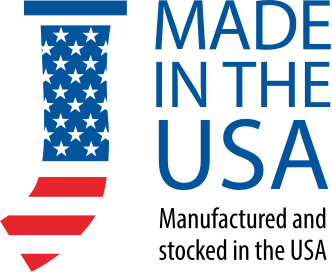Why Your Business Needs Egress Markers for Safety
During a normal day getting outside of a building is no big deal. But add the fear invoked from an emergency situation, especially one with a power outage- and this normal task becomes extremely difficult. That is why it is essential to make your buildings egress simple and easy to understand.
Well-placed egress markers aren’t just essential to the safety of your building occupants, they are regulated and required by law. Specifically, The National Fire Protection Association’s NFPA 101: Life Safety Code, International Building (IBC) and Fire Codes (IFC), and The Occupational Health and Safety Administration (OSHA) all have requirements that your building needs to comply with when it comes to egress.
What Is Effective Egress?
Effective egress in its most basic is the installation of luminous egress path markings that help all individuals easily locate the nearest building exit. Egress code compliance is required in almost all new buildings and high-rise buildings that are over 75 feet or 7 stories.
An effective egress system will consist of three separate parts: (1) the exit access, (2) the exit, (3) the exit discharge. The egress marking systems are meant to provide a visual delineation of a building’s floor plan that shows how occupants should evacuate to safety.
The safety products included in egress marking systems can include some or all of the following:
- Emergency Exit Signs - Door Signs - Stairwell Identifiers
- Egress Markers - Egress Symbols - Equipment Location Markers
- Glow in the dark tapes - Luminous Markings - Information Placards
An effective egress system truly saves lives. In the 2001 World Trade Center Tower attacks, survivors noted the luminous egress path markings installed in the building helped them find their escape routes.
Photoluminescent Egress Systems
Photoluminescent technology is an excellent option for luminous egress path markings. Replacing the need for electricity and batteries by using ambient light, storing in, and then emitting during darkness is the basis of photoluminescent products. For photoluminescent egress systems that means you don’t have to worry about dealing with wires, outlets, or changing batteries. The installation is simple and most photoluminescent egress systems are approved by regulating authorities.
However, not all photoluminescent egress systems are created equal. Not just any glow-in-the-dark material will suffice. For example, some photoluminscent products of poor quality will quickly become an unreliable light source due to settling particles. And be wary of glow-in-the-dark egress systems using tritium, which is a radioactive material.
Look for a high-quality photoluminescent film or strip that is engineered by experienced professionals. Jessup Manufacturing, a global leader in photoluminescent films and strips, provides a wide variety of long-lasting, approved photoluminescent egress markers.
Where to Install Egress Markers
Luminous markers are required for all doors, steps, landings, handrails, perimeters, and obstacles. While the list below is by now means complete, it will highlight some important considerations when installing egress markers, including current code requirements.
PERIMETER DEMARCATION LINES
These show where obstacles, handrails, door frames, and other objects or enclosures are located. IBC (Sections 1024.2.4) and NFPA 101 (Section 7.2.2.5.5.4) state that stair landings and other floor areas within exit enclosures, with the exception of the sides of steps, shall be provided with solid and continuous demarcation lines on the floor.
STAIRS
These are some of the most important areas of a building to ensure egress markings are properly placed because they will be used in case of fire or power outage by almost all occupants.
Stairs and stair landings and other floor areas within exit enclosures, with the exception of the sides of steps, shall be provided with solid and continuous demarcation lines on the floor or on the walls or a combination of both according to IBC and IFC. The leading edge of exit stair landings must be marked with a solid and continuous marking stripe consistent with the dimensional requirements for stair treads and shall be the same length as, and consistent with, the stripes on the steps (NFPA 101 Section 7.2.2.5.5.2).
Stair handrails should have egress markers applied to, or be part of, at least the upper surface of the handrail; have a minimum width of ½ inch (13mm); and extend the full length of each handrail. The stripe shall be placed on the top surface of the handrail for the entire length of the handrail, including extensions and newel post caps. Where handrails or handrail extensions bend or turn corners, the stripe shall not have a gap of more than 4 inches (102mm).
DIRECTIONAL SIGNAGE
Directional signage is a very important part of your egress system, not only for those exiting the building but for rescue teams entering to save occupants. IBC Section 1007.10 states that direction signage indicating the location of the other means of egress and which are accessible means of egress shall be provided at the following: exits serving a required accessible space but not providing an approved accessible means of egress, at elevator landings and within areas of refuge.
Shop Photolumonscent Egress Systems
Photoluminescent egress marking systems that are listed and labeled in accordance with UL 924 provide little to no maintenance, are extremely cost-efficient, and offer continued lumination for safe exiting during an emergency or power outage situation. Organizations and buildings such as the Pentagon, U.S. Department of Energy, and Boeing all utilized photoluminescent egress marking systems.
Shop Jessup Manufacturings wide variety of UL 924 listed photoluminescent egress markers today.



















